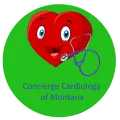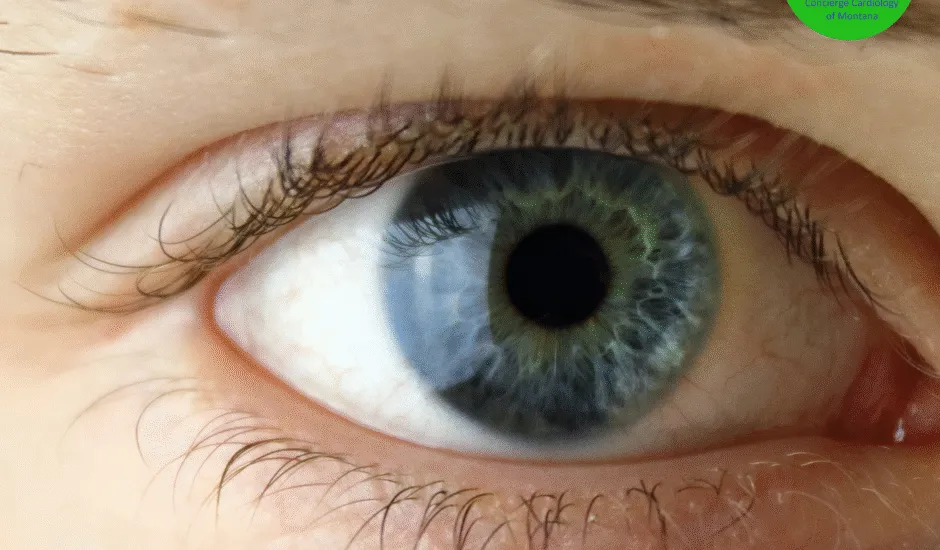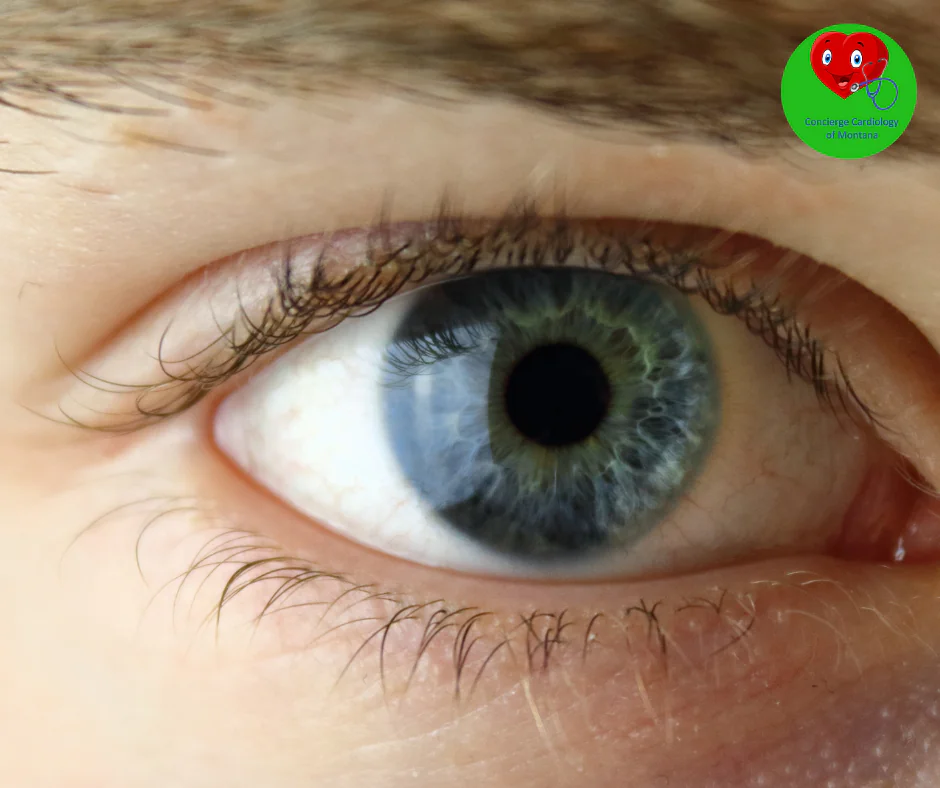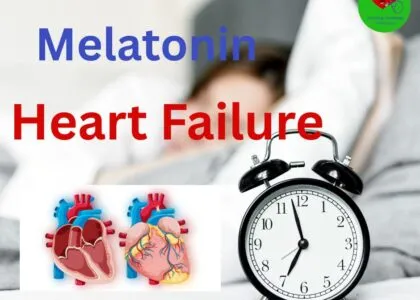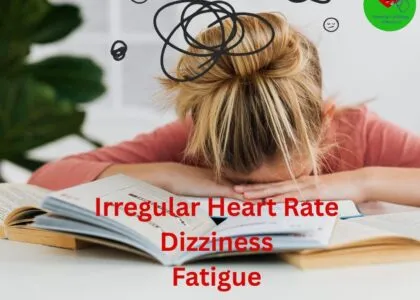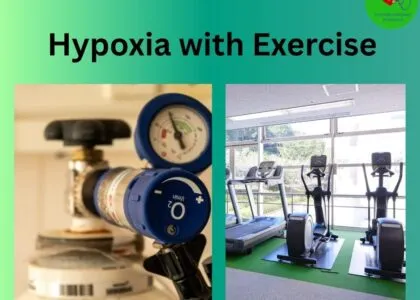Table of Contents
Vision is one of our most precious senses, and experiencing sudden vision loss can be a startling and distressing event. While many individuals might initially consider ocular conditions such as retinal detachment or glaucoma as culprits, it’s crucial to recognize that cardiac health is intricately linked to eye health. Conditions like high blood pressure, high cholesterol, coronary artery disease, and diabetes can all contribute to vision problems. This post explores these connections and emphasizes the importance of proactive health screenings.
The Heart-Eye Connection: How Cardiac Health Affects Vision
1. High Blood Pressure (Hypertension)
Hypertension is often referred to as the “silent killer” due to its tendency to present no symptoms while causing significant damage to the body over time. One significant complication of chronic high blood pressure is its impact on the eyes. Hypertensive retinopathy occurs when there is damage to the blood vessels in the retina due to elevated blood pressure levels. This can lead to a range of vision issues, including blurred vision, changes in color perception, and, in severe cases, sudden vision loss. Regular blood pressure checks are essential for early detection and management of hypertension.
2. High Cholesterol
Elevated cholesterol levels can pave the way for atherosclerosis—a condition characterized by the buildup of plaque in the arteries. This narrowing of the arteries not only restricts blood flow to the heart but can also affect blood supply to the eyes. The retina is highly vascularized, meaning it relies on a healthy blood supply to function properly. Sudden vision loss may occur if blood flow to the retina is compromised due to high cholesterol. Getting your lipid panel checked regularly can help in managing cholesterol levels and reducing the risk of related complications.
3. Coronary Artery Disease (CAD)
CAD results from the progressive narrowing of coronary arteries, primarily due to plaque buildup from factors such as high cholesterol, hypertension, or smoking. This reduced blood flow can also impact other areas, including the eyes. When the retina doesn’t receive adequate blood supply, it can lead to abrupt vision changes. It’s important to manage CAD through lifestyle changes and medical interventions to preserve overall health, including vision.
4. Diabetes and Diabetic Retinopathy
Diabetes is a significant cause of vision loss, with diabetic retinopathy being one of the most concerning complications. This condition arises when elevated blood sugar levels damage the blood vessels in the retina, leading to issues such as swelling, leakage, and even retinal detachment. Sudden vision loss can occur if these blood vessels burst or become severely damaged. Therefore, managing blood sugar levels effectively is vital not only for preventing cardiac complications but also for protecting eye health. Regular A1C testing helps monitor long-term blood sugar control in diabetics.
Other Cardiac Causes of Vision Loss
In addition to high blood pressure, cholesterol, and diabetes, there are other cardiac-related issues that can affect vision:
– Arrhythmias: Irregular heartbeats can lead to inadequate blood flow to various organs, including the eyes, potentially causing temporary vision disturbances or blackouts.
– Heart Failure: This condition occurs when the heart cannot pump effectively, which may compromise blood supply throughout the body, including the retina. Visual symptoms can arise as a result of reduced oxygen and nutrients reaching the eyes.
Signs and Symptoms to Watch For
While sudden vision loss can occur for various reasons, it’s important to remain vigilant for warning signs that may indicate an underlying cardiac problem. Besides changes in vision, symptoms to be aware of include:
– Shortness of breath, especially with minimal exertion
– Chest pain or discomfort, which can sometimes radiate to the arm, back, or jaw
– Dizziness, light-headedness, or fainting spells
– Unexplained fatigue or weakness
Experiencing sudden vision changes alongside these symptoms warrants immediate medical evaluation to rule out serious conditions.
The Importance of Regular Screenings
Given the strong link between cardiac health and vision, it is vital to prioritize regular health screenings. Ensure that you receive your cardiac screening, which includes routine blood pressure checks, lipid panels, and A1C tests. These tests are crucial for assessing your risk factors and enabling early intervention if any issues arise.
– Blood Pressure Checks: Regular monitoring helps ensure your blood pressure stays within a healthy range, reducing the risk of hypertensive retinopathy and other complications.
– Lipid Panel: A lipid panel helps evaluate cholesterol levels, informing you if lifestyle modifications or medications are necessary to reduce the risk of atherosclerosis and its associated vision problems.
– A1C Test: For those living with diabetes, this test provides insight into long-term blood sugar control, helping to manage the risk of diabetic retinopathy effectively.
Conclusion: Taking Charge of Your Health
Understanding the interconnectedness of vision and cardiac health emphasizes the need for a proactive approach toward your health. By maintaining regular check-ups and screenings, managing risk factors like high blood pressure, cholesterol, diabetes, and coronary artery disease, you can significantly lower your chances of experiencing sudden vision loss.
Adopting a heart-healthy lifestyle—consisting of a balanced diet, regular physical activity, and stress management—will not only support your cardiovascular health but will also help protect your vision. If you have concerns regarding your heart health or vision, consult with your healthcare provider to discuss appropriate screenings and preventative measures tailored to your needs.
Taking these steps today can lead to a healthier tomorrow, ensuring that your vision, along with your heart health, remains clear and strong.
Speakto our cardiologist, Dr. Hua, to learn more about natural ways to improve your heart health.

